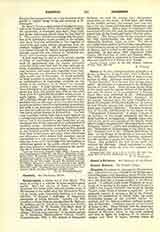
George Joseph Camel
Botanist, b. at Brune, in Moravia, April 21, 1661; died in Manila, May 2, 1706

Camel (or KAMEL), GEORGE JOSEPH, botanist, b. at Brune, in Moravia, April 21, 1661; died in Manila, May 2, 1706. He entered the Society of Jesus as a lay brother in 1682. Although sometimes spoken of as “Father Camellus” it is not sure that he was ever a priest. He was sent as a missionary to the Philippine Islands six years later. There he took up the study of the plants and the natural history of the Islands, and sent the results of his investigations to Europe, where they were published in the “Philosophical Transactions of the Royal Society” (London). In his honor, Linnaeus gave the name Camellia to a genus of evergreen shrubs remarkable for the beauty of their flowers, among them being the well-known Japan rose (Camellia Japonica). The mere enumeration of Camel’s contributions to the pages of the “Philosophical Transactions” is ample evidence of the industry of this simple missionary and his orderly method of investigation. Besides many treatises on the plants and animals of the islands, Camel left two bulky volumes on the “Medicinal Plants of the Philippine Islands“, which were published in part in the “Philosophical Transactions of the Royal Society” (London) and in the “Historia Plantarum” of Ray. In the library of the Jesuits at Louvain there is a manuscript collection of his drawings, representing 360 varieties of plants and herbs of the Island of Luzon. Ray published the text of the work, but omitted the drawings. Camel established a pharmacy in Manila where the poor were supplied with remedies gratis.
E. P. SPILLANE

